As a bird photographer the beautiful colors of birds are almost as important to me as they are to the birds themselves.
- Note: Todays post may seem more like a science lesson than a typical blog post from me so it may not be for everyone. I applaud you if you can get through it.
Colors play significant roles in the lives of birds for a variety of reasons. Feather color is produced in two primary ways, either from pigments or from light diffraction caused by feather structure and occasionally by ultraviolet light.
Colors Caused By Pigments Or The Lack Of Pigments
Pigments are natural coloring substances found in both plants and animals that absorb varying wavelengths of light and reflect others. Those that are reflected are the colors we see. Colors created by pigments are independent of feather structure. In birds pigments come from three different groups: carotenoids, melanins and porphyrines.
Carotenoids:
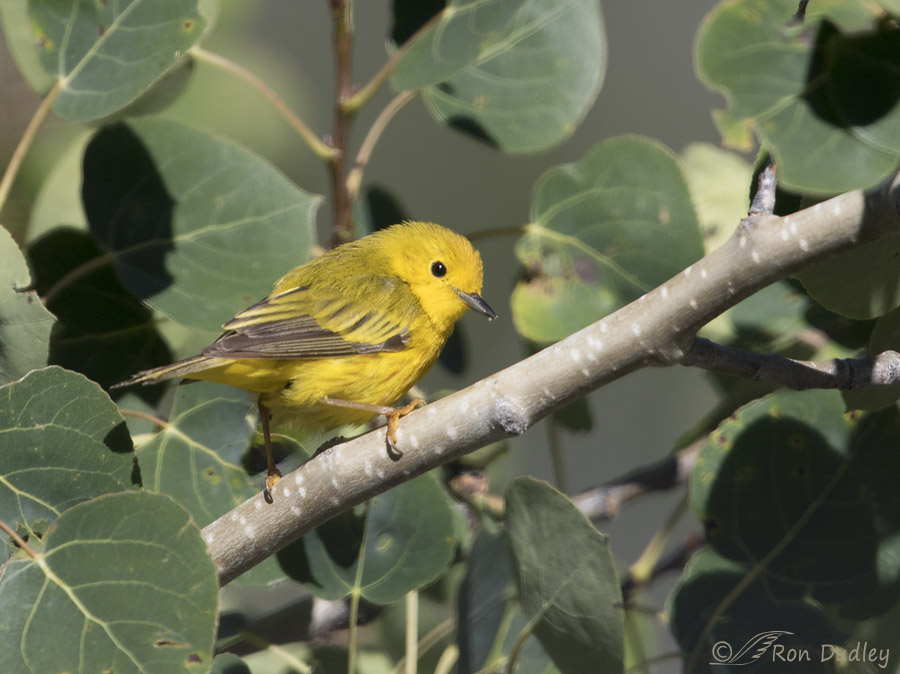
Carotenoids are responsible for most of the yellows, oranges and reds we see in feathers. They’re produced by plants and are acquired by birds when they eat plants or eat something that has eaten plants (birds don’t produce carotenoids themselves). The yellow of this Yellow Warbler was produced by carotenoids as are the reds of Northern Cardinals.
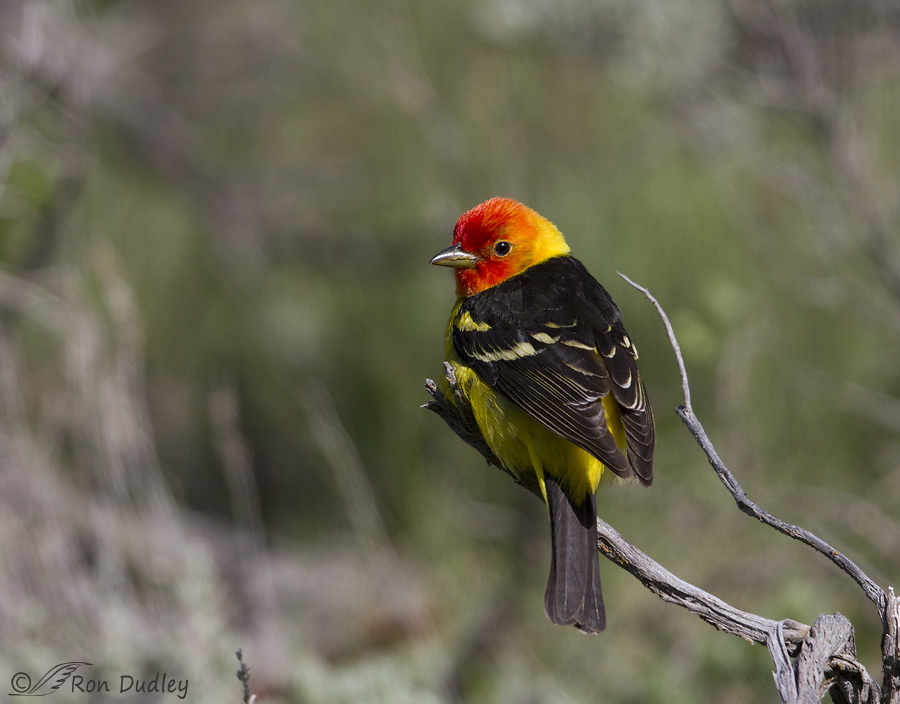
The spectacular male Western Tanager is a bit of a rarity. As expected its yellows come from carotenoids but in this case the reds come from a different (and rare in the bird world) pigment called rhodaxanthin. Other tanager species like the Scarlet, Summer and Hepatic Tanagers get their reds from the usual carotenoids but the Western Tanager is unusual in this regard. The source of their rhodoxanthin is presumed to be insects that have themselves acquired the pigment from plants.
Melanins:
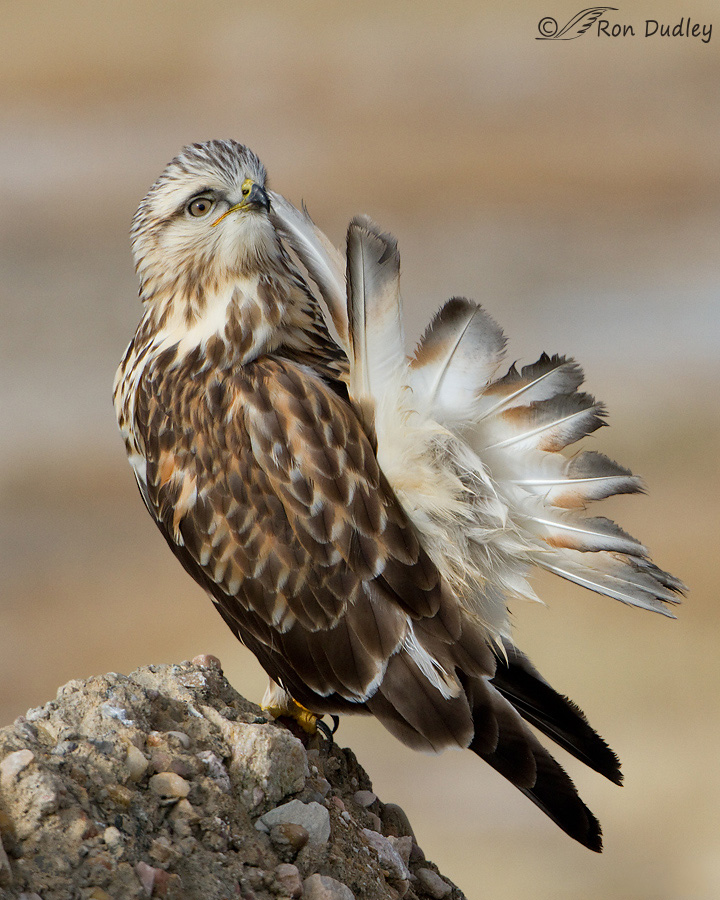
Melanins occur as tiny granules of color in both the skin and feathers of birds and are responsible for most of the blacks, browns, grays and pale yellows. Colors produced are dependent upon concentration and location of the pigment. The coloration of this beautiful Rough-legged Hawk is due to melanins.
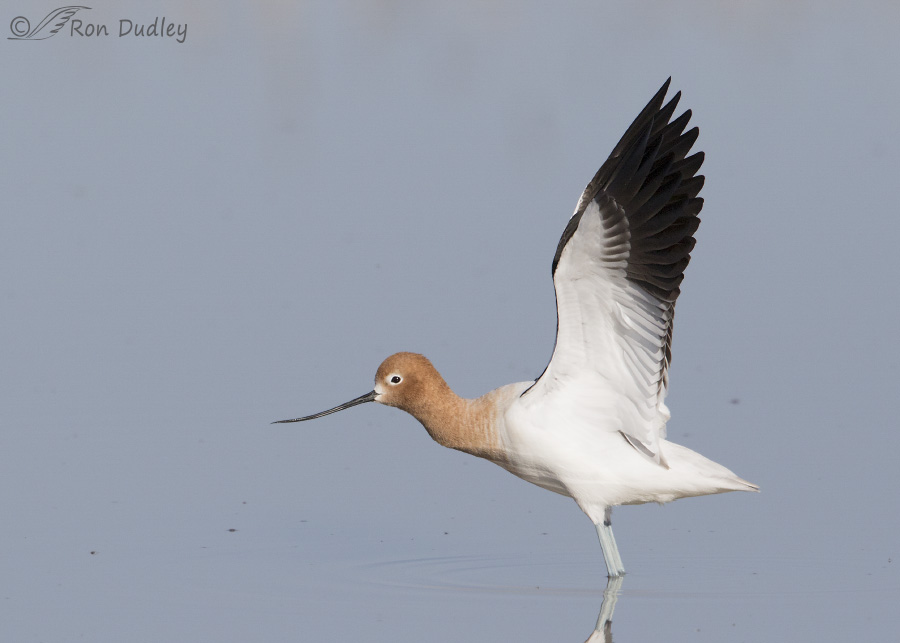
Melanins provide an additional service for birds by making their feathers stronger and more resistant to wear. The more melanin present in a feather the stronger it is so darker feathers are more resistant to wear than lighter feathers. Feathers without any pigment are the weakest of all. Many otherwise white or light-colored birds like this American Avocet have evolved melanin-laden black on their wingtips and/or primaries where wear and tear are most intense.
- Note: I’ve often heard and read that the toughness provided to feathers by melanin makes them more resistant to feather lice. However in researching this post I found studies that say otherwise so at this point I don’t know if it’s true or not. Here’s a link to the abstract of one of the studies that summarizes their methods and results.
Porphyrins:
Porphyrins are much less common pigments found in turacaos and some owls, pigeons and gallinules that fluoresce to reds, pinks, browns and greens when exposed to ultraviolet light. I don’t have any photos that show this fluorescence but it can be seen here in a road killed Great Horned Owl if you have the interest.
The Absence of Pigments:
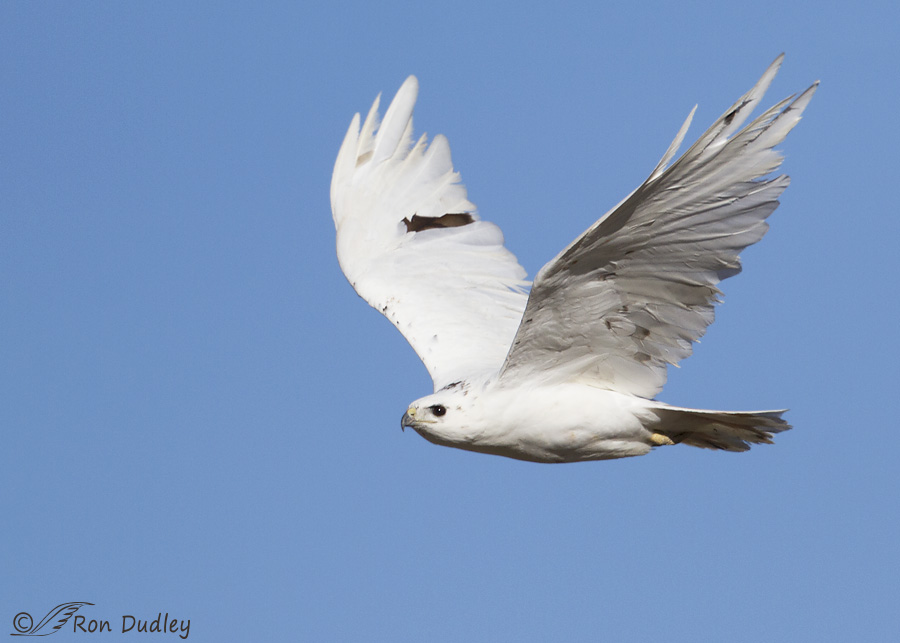
Color abnormalities caused by the unusual absence of pigments are not common but they do occur on a regular basis and albinism and leucism can be the result. This leucistic adult Red-tailed Hawk is an example.
Colors caused by feather structure:
Pigments are not responsible for all colors in birds. Iridescence, air pockets and ultraviolet light are non-pigment sources of feather colors.
Iridescence:
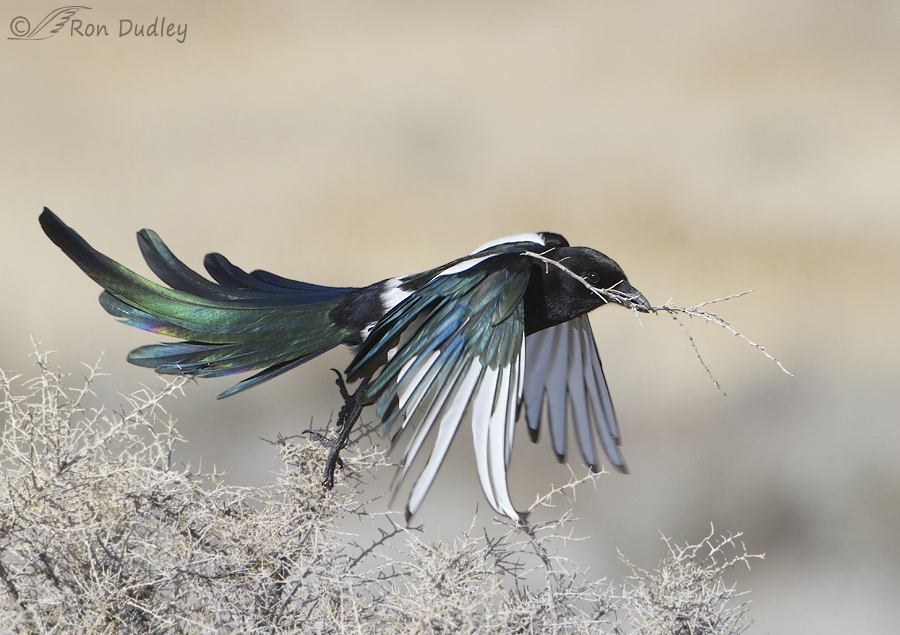
Iridescence occurs when certain surfaces appear to change color as the angle of view (or the angle of illumination) changes. Common examples of iridescence include soap bubbles, butterfly wings and sea shells.
The spectacular throat feathers (gorgets) of many hummingbirds are probably the best known example of iridescence in birds but many species demonstrate the phenomenon including this Black-billed Magpie. In birds iridescence is produced by the refraction (for physics purists it might more accurately be called interference) of white light interacting with the microscopic structure of feather barbules. The result can be a glowing, shimmering iridescent display.
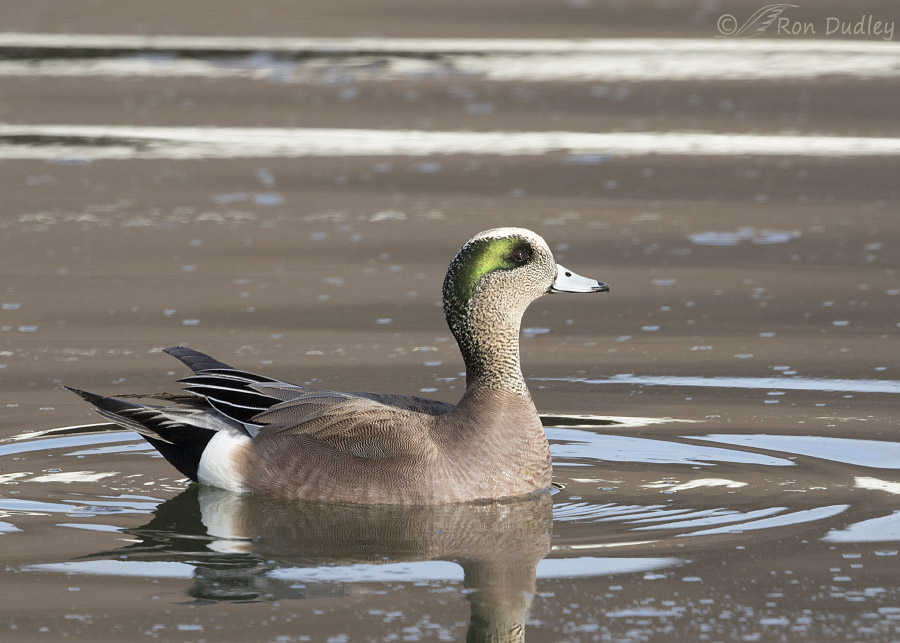
Because of the protein structure of the barbules iridescent feathers change color with different viewing angles as demonstrated by this male American Wigeon I photographed a few days ago at a local pond. The iridescent bright greens behind his eye…
disappeared completely a split second later when the duck changed the angle of his head slightly.
Air pockets:
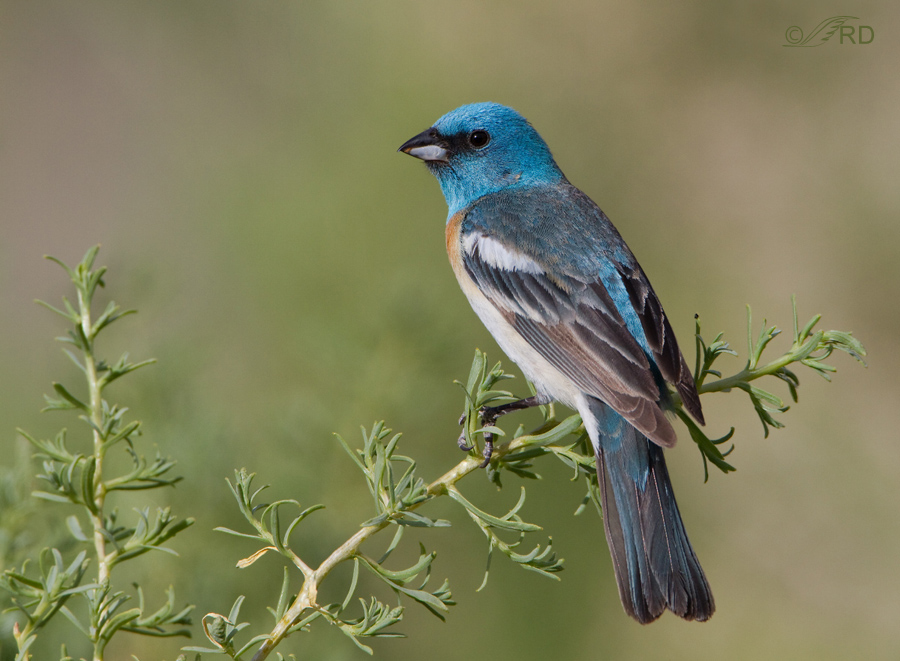
Not all colors produced by feather structure are iridescent. In some species, buntings, jays and bluebirds for example, non-iridescent blues are produced when white light strikes tiny air pockets in the feather barbs. Blue colors in birds are nearly always produced by this process, as in this Lazuli Bunting.
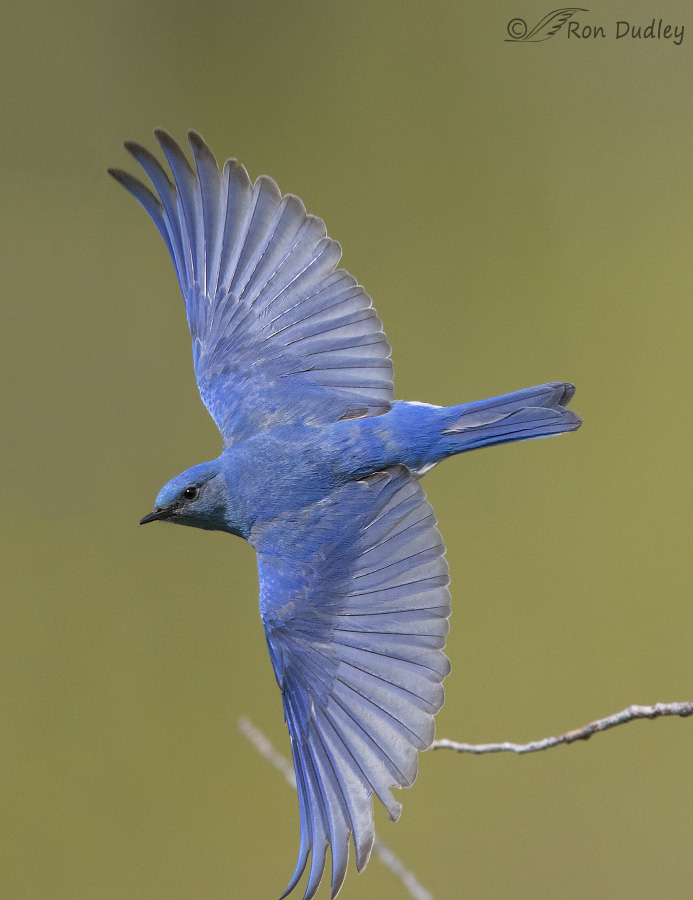
It’s often said that bluebirds like this Mountain Bluebird aren’t really blue and that can be demonstrated by observing an individual “blue” feather in normal lighting conditions where, as expected, it appears to be blue. But if you hold the same feather so it’s back-lit the blues are lost and the feather appears brown. The blues disappear because the light is no longer being reflected back by the air pockets so the browns of melanin show up instead.
Ultraviolet Feathers:
Quite a few bird species can see ultraviolet light, a portion of the light spectrum that we cannot see and many birds have feather structures that reflect UV light. As a result the colors of birds can appear quite different to each other than they do to us. This means that many birds are sexually dimorphic (males and females are different) because of colors that we’re normally not even aware of.
And that makes me wonder – how many bird species that we normally describe as having similar colors in both sexes are actually seen as dramatically different by the birds themselves?
There’s just so much that most of us aren’t aware of about birds!
Ron
Note: I’ve used Cornell Labs and a variety of other sites as sources for this post.


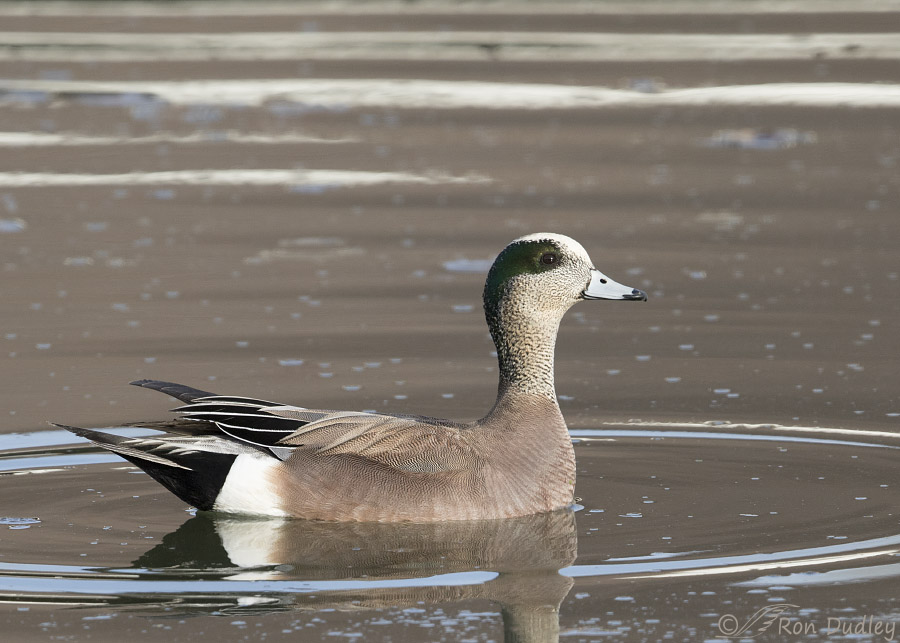
So if you made a bird like the yellow warbler, eat a totally different diet would it change color? I know with spoonbills and flamingos the more pink shrimp they eat, the pinker they are, the more brown or wit shrimp they eat, the duller they are. Love your easy explanations!
So if you made a bird eat a totally different diet would it change color? I know with spoonbills and flamingos the more pink shrimp they eat, the pinker they are, the more brown or wit shrimp they eat, the duller they are. Love your easy explantions!
Thanks, I enjoyed the ‘science lesson’
Great post Ron, I learned a great deal. It is amazing how the color pigments vary across the species and result in a multitude of colors. I usually think of their coloring as evolutionary results from attracting mates and/or camouflage. Thanks for giving me a new perspective on it. Now when I am staring through the lens at the Northern Flicker waiting to fly, so I can miss the photo (again) of its orange underwing I will have more to think about
Sorry I’m so late to the party today. LOVED learning about all the cool ways birds exhibit color. Ain’t nature grand? These are some of my favorite posts — fascinating information combined with gorgeous photos.
These are some of my favorite posts — fascinating information combined with gorgeous photos.
Yeah, what Marty said!!
Sensational shoots Ron and interesting info. Always the teacher;>)
Charlotte
After reading your post I felt like I entered on a time machine back to my school days.
I knew that some insects could see ultraviolet light but ignored completely that some birds did it too.
Thank you very much for this very interesting lesson.
I hope you enjoyed that trip backwards, Jorge. Thanks.
I love your lesson posts. I get to learn something new (sometimes several things, although in this case, only two things…LOL!) AND you include all these wonderful images to go with the lesson! Feathers are just fascinating (as are the birds who wear them). I NEVER tire of watching them. And yes, I know they know males from females in what we call a sexual dimorphism. They’re smarter than us in so many ways!
Once again, thank you SO much for sharing your brain, photos, and all the rest of it. You just ROCK!
Thank you, Laura.
Ron, thanks for the beautiful photos and lesson on colors. We are so fortunate that you have such talent and curiousity.
I don’t know about talent but I do have the curiosity. Thanks, Alice.
Curiosity is a very good thing to have, Ron! Keeps us young and vital
Feathers are amazing structures. Indoors my daughters Dusky Headed Conure looks like a nice green bird with blue tipped wings and tail. When you take the bird outside it is radiant, she has a chromatic aberration effect that make focusing on individual feathers difficult. I often wondered if it is a camouflage technique.
That sounds like an extremely interesting bird, April. I think I’d be taking it in and out all day!
Thank you for the info, and the beautiful pics.
You’re very welcome, Jean.
One of your best, Ron! I lingered over the post at breakfast and have returned to it again at lunch. Award winning photos and excellent information! Thanks again-
I’m glad there were no gory photos to ruin your breakfast, Diane!
I am so grateful to be able to learn. And so grateful that the teacher in you refuses to go away. So very grateful.
Thanks very much, EC.
Hi Ron,
I love your blog for the wonderful pictures. To make it even better , frosting on cake, you come with very interesting facts.
I guess what I want to say is you are not just a pretty blog. Your blog has real substance. Thanks for making my morning
enjoyable every day!
It’s nice to know my blog has both, at least occasionally. Thank you, Len.
Thank you, Len.
Iridescence is one of the most difficult things to capture in paintings…without using iridescent paints, so I found this especially interesting…especially the info about the hardness of dark vs light feathers. The images of the Yellow Warbler, Mountain Bluebird and,mone of my favorites, the Magpie, were exceptionally beautiful. I’ve been curious about the feather coloring diet connection ever since being told flamingoes are pink because of the shrimp they eat…and that Blue Jays were not really blue…it all boggles my mind. You postings always stretch my little, worn out brain—and raise a godzillion other questions.
I can’t even imagine trying to paint iridescence accurately – out of my league, that’s for sure.
And there’s nothing worn out about your brain, Patty. I’m confident of that.
I had absolutely no idea about this with birds and colors Ron. Thanks for the great post!
I’m glad you enjoyed it, Brad. Thank you.
This was extremely interesting. Thank you, professor.
Thanks, Arwen.
Beautiful photographs and a wonderful educational post. Thanks so much for writing it. That rough legged hawk photo is exquisite!
Thanks very much, Joanne.
Great post. I love your lessons and understand the idea that they see colors differently. I love color and certain ones make me feel happy so I’m sure they have an affect on other species.
Yes, it’s interesting how colors can affect our moods, Betty.
You learn something new every day. Today, I learned a dozen new things! Thank you.
Good! That’s great to know, Mary.
Outstanding. Thank you.
Thank you, Carroll.
Thank you Ron for sharing this wonderful post… There’s always something one can learn from your blog posting.
Thanks very much, Butch. I probably learn as much preparing my posts as others do reading them.
As usual, another great post of wow photos and “wower” editorial piece! Thank you.
Thank you, Elmer. I like “wower”…
Thanks again Ron.
I’m back from Botswana and enjoying your posts again.
This info is interesting and intriguing. You have such a wealth of information and I always learn from you. Re-posted with my birding and nature groups.
Thank you, Judy and welcome back. Share away.
Excellent lesson on feather color and appearance, Ron. Getting photos showing iridescence can be a challenge and unpredictable. Your photo above is by far the most spectacular magpie photo I’ve seen. Really wonderful! I was surprised a year ago to get a photo of a roadrunner showing a lot of iridescence in its tail. I had never observed it. Perhaps the rapid firing of a modern camera can catch things our eyes cannot.
You’re right, Judy. There’s so many things I see in my photos of birds that I never notice with the naked eye.
WOW! Great biology lesson, Ron – not to mention the beautiful photo’s! The melanin affecting the strength of feathers caught my attention as I’ve noted over time that the black chickens stay “slicker” longer than lighter colored birds – never thought about reasons…. The ability to see ultraviolet light is also interesting – SO much we don’t know! Thx!
The melanin affecting the strength of feathers caught my attention as I’ve noted over time that the black chickens stay “slicker” longer than lighter colored birds – never thought about reasons…. The ability to see ultraviolet light is also interesting – SO much we don’t know! Thx!
That’s very interesting about your chickens, Judy!